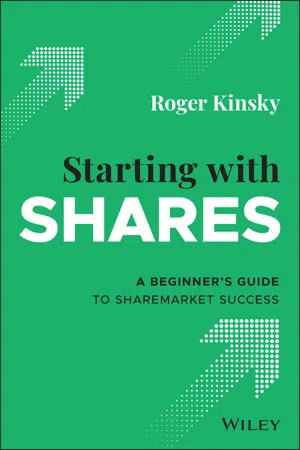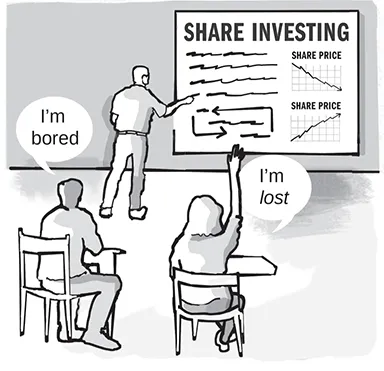
- English
- ePUB (mobile friendly)
- Available on iOS & Android
About This Book
Your no-nonsense guide to trading shares and succeeding on the share market
Starting your share investing journey is easier than you might think. You don't need a heap of capital, just a few basic rules and strategies.
In Starting WithShares you'll take your first steps toward building a profitable, sustainable portfolio. Written for beginners and packed with informative illustrations, straightforward tips and proven techniques, this essential guide will help you to become an effective and financially successful share investor.
From Roger Kinsky, Australia's foremost share-investing educatorand the best-selling author of Teach Yourself About SharesandOnline Investing on the AustralianSharemarket, thisguidebook will showyou the simplest ways to make money from sharesandprotect your hard-earned dollars in the process!
Unlike mostsharemarketguides, this book explains in simple language all the stock market terms and definitionsyou need to know, with uncomplicated tips and straightforward strategies forearning returns.Learn how to get started and get ahead, buy and sell shares, build a portfolio, manage risk, deal with dividends andchoose the best shares.
Intimidated by jargon and unsure about where to start? StartingWithShares is a unique book that isshorter, simpler and more visualthan other trading and investing resources, making it an excellent choice for you if you have little or nopriorsharemarketknowledge.
- Learn to buy and sell shares from thebest-selling author of Teach Yourself About Shares
- Start investing right away, even if you are an absolute novice with no knowledge of the markets
- Appreciate thesimple, accessible explanations andinformative illustrationsof share investing basics
- Discoveruncomplicated strategiesthat you can usefor long-term investing success
In StartingWithShares, you'll not only learn how to start your share investing journey, but you'll discover how to maximise your profitability into the future.
Frequently asked questions
Information
Chapter 1
What you need to know
Meet Michelle

Trust yourself
Knowledge level you'll need


Types of knowledge
How long is the journey?
Table of contents
- Cover
- Table of Contents
- Title page
- Copyright
- Introduction
- Chapter 1: What you need to know
- Chapter 2: Getting into shares
- Chapter 3: Profiting from shares
- Chapter 4: Is share investing gambling?
- Chapter 5: Benefits and pitfalls of share investing
- Chapter 6: Sectors and shares for your portfolio
- Chapter 7: Setting up to trade
- Chapter 8: Getting to know your shares
- Chapter 9: Getting your timing right
- Chapter 10: Buying and selling shares
- Chapter 11: Managing your shares
- Chapter 12: Turbocharging your share investment
- Chapter 13: Let's recap
- Go for it!
- Appendix: Details of my portfolio spreadsheet
- Index
- End User License Agreement